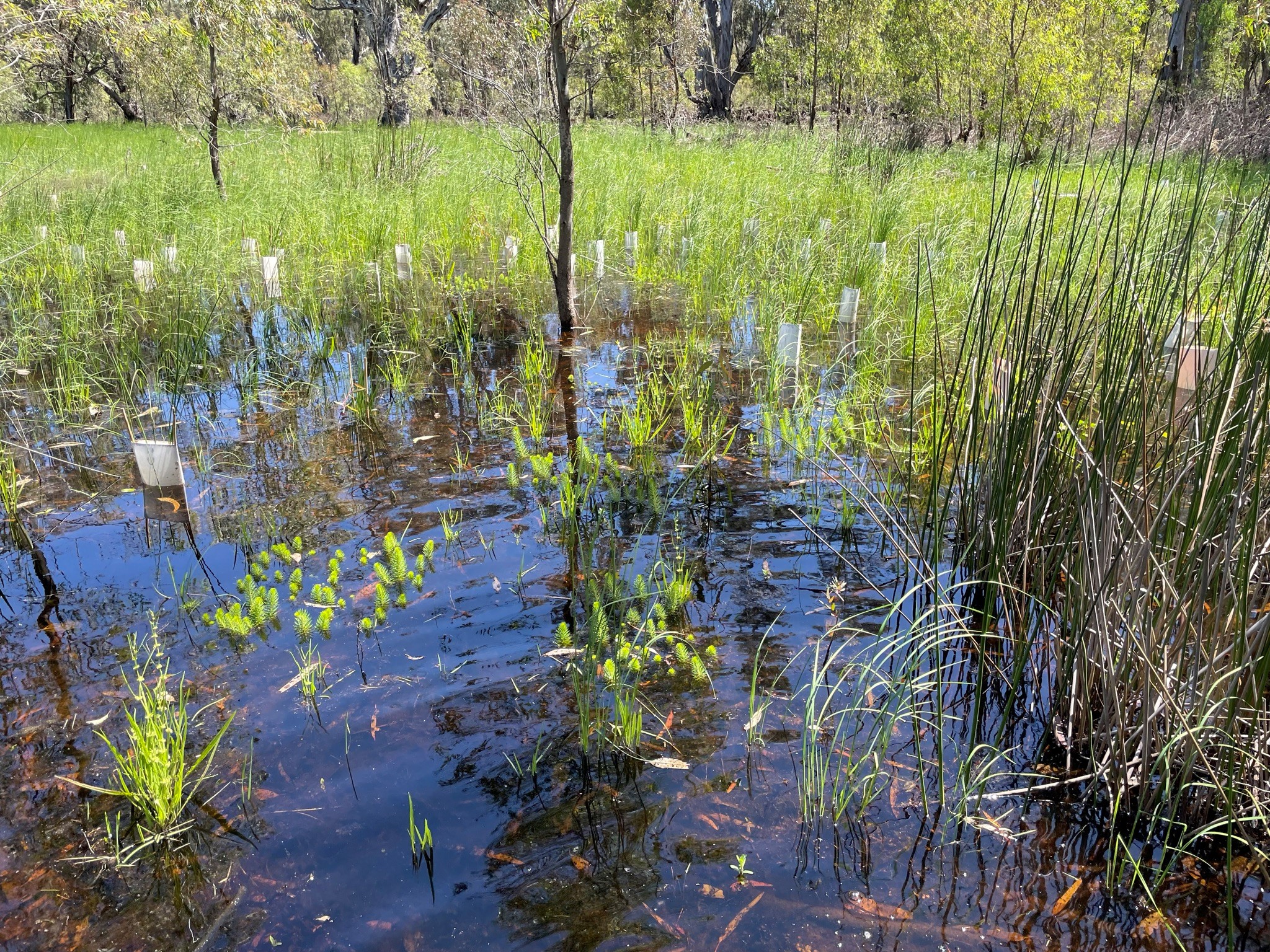November 7th, 2021Swamp success something special
When hectares of a rare aquatic plants are growing over a once-degraded wetland, you know something is working well.
That’s what ecologists have been greeted with as they monitor the results of the environmental flow onto Reed Bed Swamp in the Guttrum State Forest on Barapa Barapa and Wamba Wamba Country near Koondrook.
Swathes of aquatic plants including the rare river swamp wallaby grass and water nymph, have sprung up across the wetland after the second delivery of water for the environment in three years.
“This is certainly an uncommon sight, especially on a wetland that was so degraded from a combination of river regulation and historical management practices,” Wetland Revival Trust Senior Ecologist Damien Cook said.
“To see hectares of river swamp wallaby grass and a small population of water nymph – which needs the right inundation at the right time to colonise – is fantastic news.
“This kind of vegetation is what makes the wetlands of the Murray floodplains so special and something the community should be excited about.”
Mr Cook said the environmental flow had also brought birds back to the area.
“We counted 42 species of birds, split about 50-50 between waterbirds and woodland birds,” he said
“There is a great diversity of waterbirds, and some that are breeding, which is really good news given the amount of water across the whole region.”
Reed Bed Swamp is of environmental and cultural significance and the North Central Catchment Management Authority (CMA) has managed two recent water for the environment flows into the wetland – one this year and one in 2019.
Barapa Barapa and Wamba Wamba have been instrumental in advocating to get water into Reed Bed and worked closely with the North Central CMA in the planning and delivery.
This year’s flow also included the planting of culturally significant food and medicine plants, as well as reeds and rushes to restore habitat for the Endangered Australasian bittern.
“The recent high Murray flows only just reached Reed Bed Swamp giving it a small top up, making this environmental flow even more important,” North Central CMA Program Delivery Executive Manager Rachel Murphy said.
“It’s also important to note that we didn’t plant river swamp wallaby grass or water nymph. It came back because the right conditions had been created over a number of years through a combination of watering and some good winter rainfall.
“It highlights how resilient these wetlands can be, and with a little nudge in the right direction, can be restored into something truly spectacular.”
To ensure the benefits of this flow are not lost, another top-up flow will likely begin in late November.










